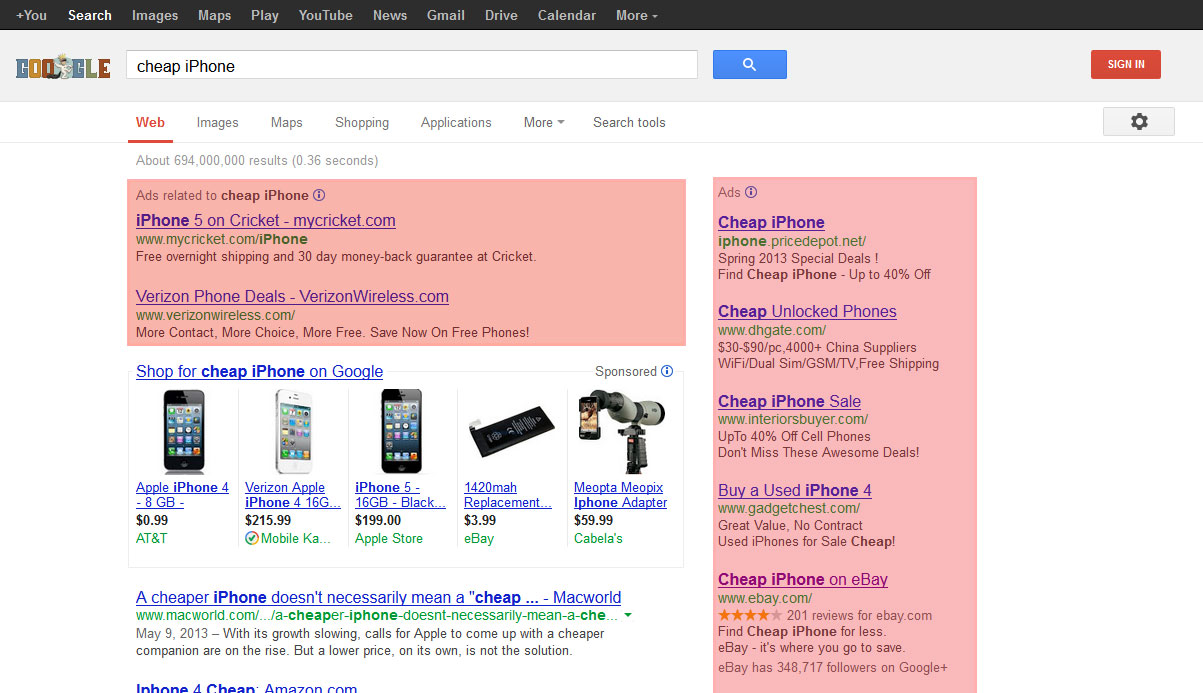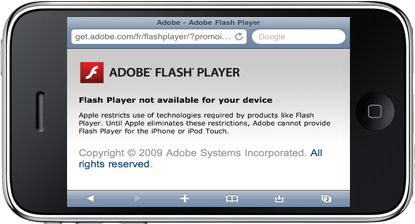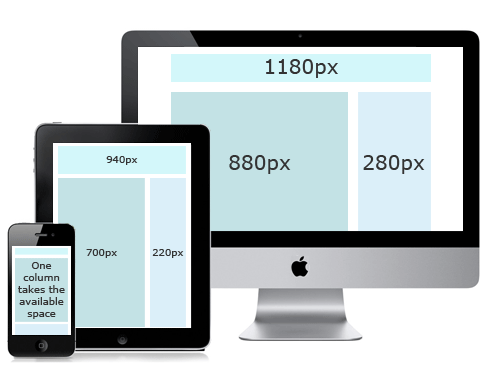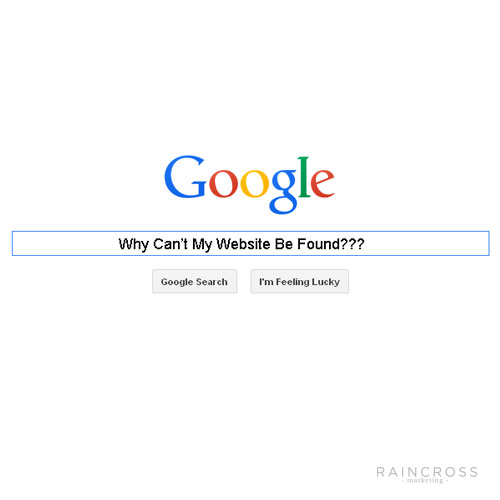PPC, SEO, SEM, and on and on and on… what does this lingo mean? We all have specific lingo in our industries and it’s easy for those of us living and breathing our industry day in and day out to get caught up thinking everyone understands what they mean. We do that too!
So here is a handy little post that we’ve compiled to make things easier for our clients and other small business owners to demystify these terms:
AdWords
 This term refers to Google Adwords. This is Google’s online advertising program. On search results pages you can generally find Google Adwords displaying at the top of search results, down the right side and sometimes at the bottom of the results page. You will find Adwords marked with the messages “Ads” to indicate these results have been paid for rather than appearing naturally.
This term refers to Google Adwords. This is Google’s online advertising program. On search results pages you can generally find Google Adwords displaying at the top of search results, down the right side and sometimes at the bottom of the results page. You will find Adwords marked with the messages “Ads” to indicate these results have been paid for rather than appearing naturally.
So what should this mean to you?
Adwords are an important tool for businesses to advertise. Buying and bidding on ads that are related to specific keywords can attract new customers and clients to your business. Adwords campaigns are paid when someone clicks on the actual ad. This means you’re only paying for those ads that someone actually clicks on. Pricing for ads can range from a few cents to hundreds of dollars depending on how competitive the keyword is.
Analytics
This term refers to an analytics program installed on your website. There are several different programs on the market. The most popular is Google Analytics which is offered for free by Google. Analytics is a web application that measures a wide variety of online statistics about your website traffic including, visits, unique visits, geographic location, technology used by visitors, user locations, user technology use, keywords used, traffic for individual pages on a site, referring sites, click analysis, bounce rates , etc… For e-commerce websites analytics can also measure product performance, sales performance, number of transactions and other advanced tracking capabilities.
So what should this mean to you?
By having an analytics program installed on your website it will provide key information about the users that visit your website. This will help you plan your marketing campaigns more effectively. Additionally, analytics can be used to track the types of user actions which will give you specific measures for marketing campaigns helping you best determine the actual costs and benefits of your efforts.
Auto-Responder
This term is in reference to email campaigns that are set up to send whenever a user performs a particular action or when a particular time period elapses. It’s also sometimes called drip marketing, auto responders can also be emails that are setup so users receive automatically with the intention to keep your business in front of them and to encourage interaction.
So what should this mean to you?
By automating certain parts of your email marketing efforts you can save time by keeping your messages in front of your customers. Timed drip marketing campaigns will help to highlight your products and services.
Backlinks
This refers to links from other sites that link back to your website content.
So what should this mean to you?
Backlinks are an important part of an internet marketing campaign. Why? Because search engines use them to gauge the popularity of your website. The more websites that link back to your website is a strong determinant for worthiness and credibility in the eyes of Google, Bing and Yahoo which will make your site rank hire in their search results.
Bounce Rate
Is a term used to describe website visitors who click to your website and then leave without doing anything or taking any action.
So what should this mean to you?
Your website needs to engage visitors when they visit. Your site should be compelling and have strong call to action messages. Your websites bounce rate can influence the rankings in search results because it is an indication of relevant content for those keyword searches. In general a lower bounce rate is a better indicator to the search engine that a visitor has found the content related to their search.
Cookie
Cookie’s we all love them! But this type of cookie is a tiny snippet of data sent from a website and stored in the user’s web browser while that user is browsing a website. Cookies are used to store small data about a user’s visit on a particular website. This data can include which buttons and links they clicked, if they logged in, and which pages they visited. Typically cookies are stored in a user’s browser for a specific time frame or sometimes indefinitely. If a user chooses to clear their cache they can also choose to delete their website cookie’s too.
So what should this mean to you?
Cookies can be very important for remarketing campaigns, for storing past search history and even recognizing you as a return visitor. Have you ever put items in an online shopping cart, and then come back at a later time and those items are still in the cart? That’s because a cookie is stored to deliver that information to the website about your past history. Typically shopping cart cookies expire after 30 days.
CMS
This term is short for Content Management System. A CMS is a database driven website that usually has an admin control panel that allows users to manage their own website. There’s a wide variety of different Content Management Systems on the market today.
So what should this mean to you?
A CMS allows for quick management of your own website. A CMS makes editing your website pages, creating blog posts, uploading images and gathering contact information extremely easy without having to understand website code.
Conversion
Like in most industries a conversion is a specific outcome that one is seeking. Online conversion is the outcome that a website owner is looking for from his website visitors. In e-commerce that would mean purchasing an item from the online store, but it can also mean having a user fill out a form, make a phone call, submit their email address or download an industry white paper or eBook. Conversion goals for a website help to measure the effectiveness of a websites marketing strategy.
So what should this mean to you?
Conversions are the way in which your gauge you the Calls To Action on your website. If your websites calls to action are not generating the appropriate conversions, it may be a good idea to rethink your marketing strategy.
Call to Action
Is text, banners or buttons on a site that is specifically placed to engage a visitor to take action and convert. Examples include “Call Us Now”, “Sign Up”, “Buy Now”, “Get Your Free Consultation”, etc…
So what should this mean to you?
When you attract a person to your website, you don’t want them to bounce (leave without taking any action). That’s why you place certain Call to Action references throughout your website. These actions allow you to gather contact information so you can follow up with them or allow you to sell your products.
Drip Marketing
Drip marketing is an ongoing email campaign that is designed to stay in front of your customers, prospects, or leads. These can be generated with Auto-Responders as explained above.
So what should this mean to you?
With Auto-Responders a drip marketing email campaign will allow you to stay in front of your customers. Setting up a drip marketing campaign is relatively easy with several different email marketing platforms available in today’s marketplace.
Domain Authority
Search engines determine the authority (popularity) on a particular subject for each domain, your domain authority is determined by a number of different factors including: your website traffic, the bounce rate of your website, and also the number of websites that are linking to content on the site (backlinks).
So what should this mean to you?
Obviously the higher domain authority wour website has, the higher you will be ranked in search engines. This is why it is so important that you build back links to your website, have a strong call to action message displayed, and drive traffic to your site from other online marketing initiatives. These factors will strengthen your domain authority.
Domain Name
 We’ve all see the GoDaddy Superbowl commercials right? A domain name is the URL of your website, for example ours is raincrossmarketing.com. The right to use a specific domain name is purchased from a domain registrar (like GoDaddy) for a pre-determined length of time and must be renewed after that period of time. The domain name is just the start to creating a website, once a domain name is purchased you’ll need server space for hosting. Domain name registration and hosting are two completely separate functions (and costs) and a client must maintain both to have a working website.
We’ve all see the GoDaddy Superbowl commercials right? A domain name is the URL of your website, for example ours is raincrossmarketing.com. The right to use a specific domain name is purchased from a domain registrar (like GoDaddy) for a pre-determined length of time and must be renewed after that period of time. The domain name is just the start to creating a website, once a domain name is purchased you’ll need server space for hosting. Domain name registration and hosting are two completely separate functions (and costs) and a client must maintain both to have a working website.
So what should this mean to you?
Purchasing a good domain name is a necessity to having a website. There are many types of extensions, the most popular being “.com”. We usually recommend a “.com” domain to our clients because of the popularity. Often times people assume a website ends with “.com” and might miss your website if it registered with a different extension.
Dynamic Page
Raincross Marketing offers the ability to our clients to create dynamic pages in our CMS (Content Management System). A dynamic page is a page or section which requires the ability to add additional content on a continued basis. Some common examples of this are:
- Blog posts
- Portfolio pages
- Real Estate Listings
- Client Testimonials
- Restaurant Specials, etc…
Raincross Marketing can create dynamic content pages that meet a variety of requirements.
So what should this mean to you?
By having a CMS that allows you to create Dynamic pages on your website you can easily update product information, service information, promotions and many other types of content. Maybe you’ve heard the term “Content Is King” that because search engines love content. By having the ability to consistently ad content search engines will crawl your website more often looking for fresh content to add to their search results pages.
Email Subscribers
An email subscriber, like a catalog subscriber, is a person or business that has requested you to email them with updates, or has voluntarily subscribed or opted-in to your emails emails via a Call to Action placed on your website.
So what should this mean to you?
It is frowned upon (and sometimes illegal too) to send email marketing campaigns to people you have not received permission to send to. It is important that you are constantly doing all you can to build your subscriber lists so that you can send email marketing campaigns to a large group of potential customers and clients. The more email subscribers you have the more your message will reach.
Flash
Flash is a rich internet application (RIA) for rendering audio and video content on a website. It was created by Macromedia and later sold to Adobe.
So what should this mean to you?
Oh flash…you used to be loved oh so much! In the early 2000’s flash websites were extremely popular, however over the past several years it has lost it’s dominance. Here’s why: Flash websites and applications are annoying a frustrating (they require your browser to that the plug-in installed), but more so they hide your content in images rather than in text. Search engine web crawlers aren’t able to read text in images which means valuable information is hidden from being indexed by search engines. And if your content can’t be crawled search engines can’t rank you. At Raincross Marketing we don’t use flash in any way. With the development of HTML5 we’re able to build websites that have great flash-like features without actually using flash and best of all they are indexable by search engines!
Impressions
An impression which sometimes coined as a view, ad view, or reach is a term that refers to the point in which an ad is viewed once by a visitor, or displayed once on a web page. The number of impressions of a particular advertisement is determined by the number of times the particular page is loaded. In the ad world impressions are counted for most advertising campaigns because it is an easy way to discover whether an ad is being viewed or not.
So what should this mean to you?
A good amount of impressions is great; however what’s more important is how many conversions (see Conversions above) you are getting from those impressions. Having people see your ads is one thing, having them actually click on the ads is a completely different thing. If you have a high amount of impressions, but a small amount of conversions, you may need to look at your messages and make a modification.
Keywords or Keyword Phrases
A keyword is a word or phrase that is used to help index your content so search engines like Google, Bing and Yahoo can better identify and categorize them to deliver those pages when people conduct searches.
So what should this mean to you?
By building specific keywords in your website content that relate to your business, you will improve your chances and SEO to get higher rankings. Search engines love keywords, because it helps them to determine who you are and where to categorize you.
Meta Tags
Meta tags are used by webmasters to provide search engines with additional page information. Meta Tags are put in a specific HTML tag that provide keywords and information about that page. Unlike normal HTML tags, meta tags do not affect how the page is displayed in a browser. The information provided in a meta tag provide information such as who created the page, how often it is updated, what the page is about, and which keywords represent the page’s content.
So what should this mean to you?
Meta Tags are yet another solid way to build in SEO value for your website. It’s a non-capacious way to provide valuable information to search engine crawlers without changing the look and feel of your website.
Mobile Optimization
Mobile optimization, now known as Responsive Design is the process of optimizing your website to be mobile and device friendly.
So what should this mean to you?
The world has seen a dramatic increase in smart phones over the past 5 years. Currently, over 56% of the United States population owns a smart phone, that’s up from just 35% two years ago! It’s now easier for people to access the web, and that means if your website is not optimized for mobile devices you are missing out on opportunities.
Remarketing
Remarketing is a term used by online marketers to target their advertising to consumers based on previous interactions on a website. Typically remarketing focuses on visitors who didn’t convert on previous website visits. Display ads to the previous visitor are shown as they surf the internet at various websites that have setup ad networks which buy media from on behalf of their customers. In most cases a company has already spent marketing dollars to get that visitor to their site the first time, so the term remarketing or sometimes retargeting is based on the concept of marketing to them again.
So what should this mean to you?
Remarketing is used exclusively for visitors who “bounce” (see Bounce above). By using cookies, these ads are an excellent way to attract vistitors back to your website who didn’t convert the first time.
Page Rank
Page Rank was developed by Google for the purpose of ranking websites from the most important to the least important. The Page Rank process involves an algorithm which takes into account several factors to determine the rank of a particular web page. For example, if a web page has several high quality links from external websites that also rank well, then the web page is given a high ranking. Where the links are coming from is plays just as an important role as does the number of links to any particular website or web page.
So what should this mean to you?
In general the higher your page rank, the more likely your website is found online. Over 70% of people who perform a search don’t go past the first page of results and over 90% don’t go past the 2nd page. That makes it very important to have a well optimized website that has a strong page rank.
Pay-Per-Click (PPC)
Is an internet advertising model used to direct traffic/visitors to websites, in which advertisers pay the publisher when their ad is clicked. It is defined simply as “the amount spent to get an advertisement clicked.”
So what should this mean to you?
PPC ads are an effective way to drive visitors to your website. By using PPC ads you can often times rank ahead of your competition in natural search results. We advise most of our clients to try PPC advertising particularly when they first launch their website, because it take time and patience to rank high in the early stages. With PPC advertising you can get yourself onto the first page of results for many of your top keywords and phrases.
Referrer
Referrer or referral links are site visits that come from external websites to your website.
So what should this mean to you?
To drive traffic to your website it is important for website owners to have referrer links. These links (also called backlinks) help to strengthen your domain authority which in turn will help your website rank higher in searches.
Responsive Design
Responsive design is a method of crafting a website to provide an optimal viewing experience. Easy reading and navigation with a minimum of resizing, panning, and scrolling. Responsive design covers a wide range of devices from mobile smart phones to desktop computer monitors.
So what should this mean to you?
Responsive design allows users that are using devices like iPhones, Android phones and tablets to have a highly functional website without zooming in on content or resorting to a mobile app. Another advantage to this approach vs. a traditional mobile app is that most tablets have a larger screen than a smart phone. Since mobile apps detect tablets as a phone, tablets usually get the smaller phone size rather than an adjusted screen size that you can achieve with a responsive design.
Search Engine Optimization (SEO)
This is the process of affecting the visibility of a website or a web page in a search engine’s “natural” or un-paid (“organic”) search results.
So what should this mean to you?
In general the highest ranking websites have more visitors. SEO is an internet marketing strategy which takes in to account how search engines work, what people are searching for, the actual search terms or keywords that people type into search engines and which search engines are preferred by their targeted audience. There are two types of SEO methods to understand. First, on-page SEO involves optimizing the website content, the HTML and the associated coding to both increase its relevance to specific keywords. The second type we typically call off-page SEO, which is the practice of promoting a site externally to increase the number of backlinks, inbound links, site citations and references.
Social Media Marketing (SMM)
A marketing process used to gain website traffic through social media sites. This can include content writing, community management, and media buys on social media platforms such as Facebook, Twitter, LinkedIn, Pinterest, YouTube and so on.
So what should this mean to you?
Staying in contact with your customers is important and social media makes it easier. You have to be honest with yourself people will not visit your website day in and day out, but chances are they will check social media at least once a day. This makes social media a great way to reach and get your message in front of them.
Web Crawler
A web crawler (sometimes called a web spider) is an internet bot that search engines use to to update their web content or indexes. Web crawlers can copy all the pages they visit for later processing by a search engine that indexes the pages so that users can search them much more quickly.
So what should this mean to you?
Web crawlers are your friends. You want them to pick up your site content, pages posts and images. They are going to determine your page rankings and search visibility. You need to make sure that your entire website is designed to be easily accessible and you have strong meaningful content for the web crawlers to grab.
XML Sitemap
A sitemap allows a website to inform search engines about pages on a website that are available for crawling. A Sitemap is an XML file that lists the URLs for a site.
So what should this mean to you?
Want to make it easier for web crawlers to find your content? Give them a sitemap! This is going to help your pages get found much easier and gain access to the content you created. Allowing easy access to your content will go a long way in getting your website ranked higher and faster.





About The Author: Kevin Watts
Kevin Watts is the founder of Raincross, a premier web design, development and digital marketing agency headquartered in Riverside, CA.
Kevin got his start in online marketing and website design by working for some of the most prominent names in online retail. He's most recognized for helping to start e-commerce retailer Organize.com in 1998, and spent 12 years running the company's e-commerce and online marketing operations. He has been recognized and has received several online retail, marketing and merchandising awards throughout his career.
Kevin grew up in Riverside, CA and graduated from the University of Wyoming. In his spare time, Kevin is an avid fly-fisherman, college football fan, and enjoys spending time with his son Matthew, daughter Kate and wife Lindsey.
More posts by Kevin Watts